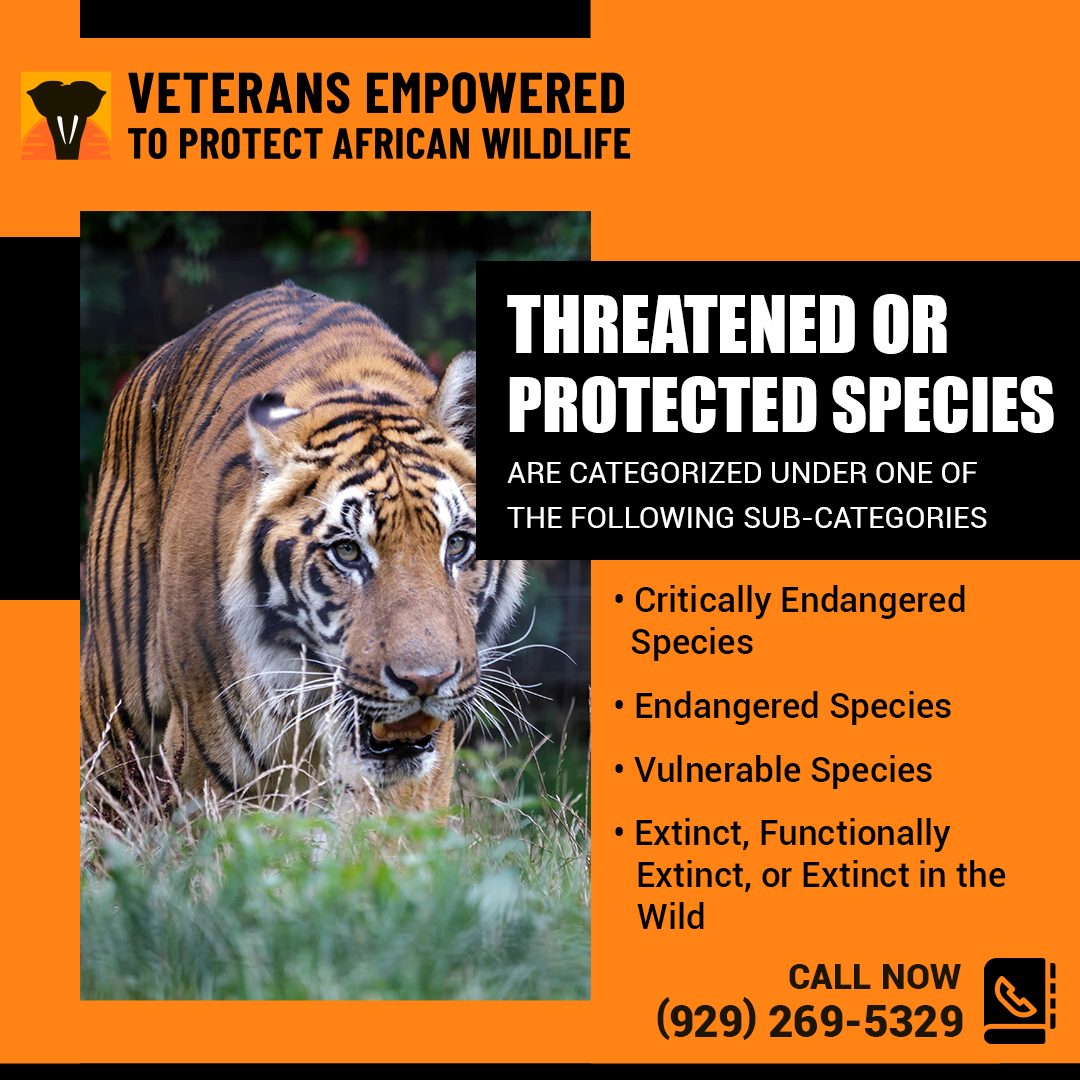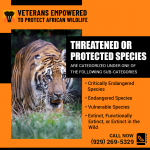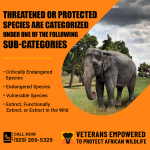Endangered species and conservation
Wildlife conservation and endangered species is a concern that has plagued environmentalists, conservationists, and governments for decades. VETPAW reviews certain concepts around endangered species and shares several crucial facts about them to enable an in-depth understanding of this looming challenge.
What is a threatened species?
Threatened species or endangered species are species that have been classified as ‘at high risk of extinction in the wild’. This means that in the absence of any concrete measures to conserve them and their habitats, there is a high likelihood of them becoming extinct.
What is a protected species?
Protected species are species protected by international, national, and provincial legislation. Hunting, picking, owning, importing, exporting, transporting, growing, breeding and trading of these species is illegal without valid permits or licenses.
Threatened or protected species are categorized under one of the following sub-categories:
- Critically Endangered Species – An indigenous species that faces an extremely high risk of extinction in the wild in the imminent future falls in this category. Critically endangered species means that the species numbers have decreased, or will decrease by 80% within three generations.
- Endangered Species – This is an indigenous species that face a high risk of extinction in the wild in the near future but is not a Critically Endangered Species. This category is at risk of becoming extinct because it is either few in numbers or threatened by changing environmental or predation parameters.
- Vulnerable Species – This indigenous species is faced with an extremely high risk of extinction in the wild in the medium-term future. However, it is not a Critically Endangered species or an Endangered species This category is likely to become endangered unless the circumstances threatening its survival and reproduction improve.
- Extinct, Functionally Extinct, or Extinct in the Wild - As the name suggests, an Extinct Species has no surviving members. A Functionally Extinct species has a handful of members left, which are unable to and unlikely to reproduce due to various factors. Extinct in the Wild is the species that is not known to have any living specimens in the wild. They are only maintained in zoos or other artificial environments. Some of these species are functionally extinct as well.
Wildlife facts to remember
- Extinction is a natural phenomenon as it occurs at a natural “background” rate of about one to five species per year. Shockingly, scientists estimate that the planet is now losing species at 1,000 to 10,000 times the “background” rate.
- Around 30 to 50 percent of all species are headed towards extinction by mid-century unless some dire measures are taken.
- 99% of the threatened species are at risk due to human activities such as deforestation that are causing habitat loss, the introduction of exotic species, and global warming.
- The Endangered Species Act of 1973 (ESA) protects registered endangered species. It is unlawful for a person to shoot, harm, capture, trap, or attempt any such actions to the species. The purpose of the ESA is to recover species from the endangered list by restoring their ecological health and removing them from the endangered species list.
- Freshwater ecosystems, home to about 100,000 known species of plants and animals, are one of the most endangered habitats in the world currently.
- There are now 41,415 species on the IUCN Red List, and 16,306 of them are endangered species threatened with extinction. IUCN, International Union for Conservation of Nature, is the world's oldest and largest global environmental organization.
- Between 0.01–0.1% of all species are lost every year — which means between 200 and 2,000 extinctions annually.
8. Every animal, plant, and fungus is part of a broader ecosystem. Therefore, losing or saving any species will lead to a powerful ripple effect.
- According to the endangered species list from 2020, 26% of all assessed mammals are in danger of extinction.
VETPAW has been making constant endeavors to conserve wildlife such as rhinos, elephants, and cheetah’s in Africa in collaboration with local rangers, the local communities, as well as government bodies. Here’s a list of some of the most endangered species in Africa:
- Pangolin
- White and Black Rhino
- African Elephants
- Rothschild Giraffe
- Mountain Gorilla
- Knysna Seahorse
- Cuvier’s Atlas Gazelle
- Ethiopian Wolves
- Pygmy Hippo
- African Penguin
- Cheetah
These facts showcase that mankind stands to lose the most if drastic measures are not taken, not just at an institutional level but also at an individual level.
VETPAW - Veterans Empowered to Protect African Wildlife
Founded in 2013, VETPAW is a non-profit organization and a community of US war veterans dedicated to protecting African wildlife and training local African rangers in the war against poaching.
Visit VETPAW.org or call at (929) 269-5329 to make a contribution or volunteer for sustainability and wildlife conservation.
























